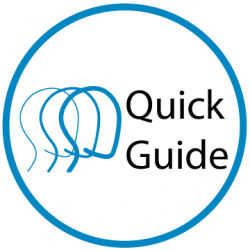Your Cart
Supporting Independence

What Impacts Independence?
Independence is highly valued in our society. As we grow up, most of us strive to go out on our own and make our own choices. A brain injury can be a barrier to that road towards independence.
Depending on the personality of the individual and the deficits caused by their brain injury, a caregiver may find they are both a cheerleader and police officer when promoting independent and safe behavior.
How much and how quickly independence can be regained depends on several factors: the severity of the brain injury, what skills/abilities were impacted and the mindset of the injured person and their caregivers.
Whether the barrier to independence involves physical abilities or cognitive abilities, it can be easy for caregivers to get in the habit of “doing for” the person. Short-term, it might seem easier, faster or kinder for the caregiver to take over a task, but this can interfere with developing independence in the long run.
How Can I Support Independence?
- Keep this an open topic between the person, their caregiver(s) and their treatment team. This is not a one-time discussion, but one that needs a lot of back and forth about what to work on now and what to get back to later. The person with the injury needs to be actively involved in setting their long and short-term goals.
- Expect more of the person and they will have something to aim for. This might mean stepping away and encouraging the person to practice their skills on their own.
- It can be a fine line between accomplishment and frustration. Some individuals may need to make gains a little at a time. For example, the caregiver can help to a certain point and then let the person finish or step in if the level of frustration is getting to be too much or counter-productive.
- Encourage exercise and movement. Continuing the exercises and routines taught by therapists can help the person continue to make gains. Sometimes therapy will stop due to issues like insurance limitations or the amount of progress being made. Remember that treatment can also be restarted, especially if the person had medical issues to deal with while in therapy, or if they’ve made some gains and might be in a position to get further now.
- Provide feedback. Acknowledge the gains they are making as well as the effort they are putting forth. It can be hard for the person to notice the improvements they are making, especially if they are comparing themselves to how they were before their injury.
- Encourage the individual to make as many decisions as possible to maintain independence. Deciding what to wear, when and what to eat, when to go to bed are simple day to day choices that most adults make for themselves.
- Break down tasks into steps. Larger tasks can be harder to tackle and more frustrating. To help, simplify large tasks by breaking them into smaller, more manageable chunks. For example, instead of saying “Clean the Kitchen” the tasks can be itemized as (a) wipe the counters, (b) empty the dishwasher, (c) re-load the dishwasher ... This can help them stay on track and feel closer to completion with each check mark. If the person can participate in making the checklist, that’s even better.
Safety Matters
People with brain injury may have poor self-awareness about which activities they can safely engage in. Cognitive issues such as problems with memory, attention and problem solving, impulsiveness and/or poor judgement might leave the person at risk for injury.
- Be specific in restrictions. It is counterproductive to keep the individual from doing everything. For example - if their attention is poor, but their balance is good, it might be ok to climb a step stool to put something away, but not to cook at the stove unattended.
- Use assistive devices and compensatory strategies. Walkers and canes can increase a person’s mobility. Adaptive dressing tools such as elastic shoe laces and Velcro® closures can improve a person’s independence with dressing and toileting. Timers, reminders from a cell phone, and written notes are other tools. Frequent, regular use of these ideas can make them second nature and improve their helpfulness.
- Practice taking the next step with supervision. When the person with a brain injury expresses the desire to move forward, negotiate the next steps together. For example, walk by their side when they feel ready to give up a cane or agree to them going solo inside, with stand by assistance when outside.
- Learn from “failures.” Most of learn from our mistakes. Controlled failures, where risks are minimized, can be more effective than a lot of talking. For instance, what if the person wants to walk to a local store but the family is afraid they may get lost. With their agreement, put a tracking app on their phone and have them explain how they will get there and ask for a call when they arrive and leave. If there is a problem, process what happened and how to improve the next time.
- Take the good days with the bad days. One of the hallmarks of brain injury is inconsistency. Fatigue, illness, and too many competing needs can impact a person living with a brain injury more than someone without a brain injury. Help the person to recognize when they’re having a bad day and modify expectations accordingly.
Recovery and increased independence can be a long process after a brain injury. For some people with severe cognitive deficits, complete independence may not attainable. Most individuals improve with time. Practice, communication, and taking a long-term approach are key in the process of supporting independence.
Resources:
Virginia Department for Aging and Rehabilitative Services Brain Injury Services Coordination Unit
This project is supported [in part] by state contract #16-002A, administered by the Virginia Department for Aging and Rehabilitative Services (DARS).
